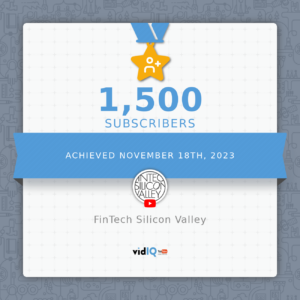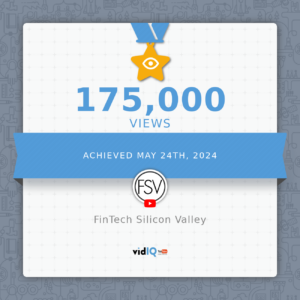
Eric Shoykhet is the Founder of Atom Finance and Link Financial Technologies link.money ,venture-backed software companies that collectively have raised $100mm. Previously, he was an investor at Governors Lane, an event-driven hedge fund. At Governors Lane, Eric worked on investments across a variety of sectors including industrials, financials, technology, and consumer staples. Prior to this, he worked in the Restructuring and Reorganization group at Blackstone. Eric graduated from the Huntsman Program in International Studies and Business at the University of Pennsylvania with degrees from both the Wharton School and the College of Arts and Sciences.
Eric Shoykhet is the Founder of Atom Finance and Link Financial Technologies link.money ,venture-backed software companies that collectively have raised $100mm. Previously, he was an investor at Governors Lane, an event-driven hedge fund. At Governors Lane, Eric worked on investments across a variety of sectors including industrials, financials, technology, and consumer staples. Prior to this, he worked in the Restructuring and Reorganization group at Blackstone. Eric graduated from the Huntsman Program in International Studies and Business at the University of Pennsylvania with degrees from both the Wharton School and the College of Arts and Sciences.

Transcription
Pemo: Welcome, Eric. Thanks so much for joining us today. I am really interested in your business, link.money. Tell me more about it and what problem you’re trying to solve with that.
Eric Shoykhet: Thanks so much for having me. So the company was created on the thesis that payment processing and payments in the United States are extremely expensive for merchants. If you look at the average cost of processing for digital merchants to take credit or debit cards, often they’re paying anywhere from two to 4% in many cases for payment processing costs. And in other markets we’ve seen a dramatic evolution in payments towards bank based payment methods and open banking. So if you look at Europe, which actually has some open banking laws, payment via bank account through a checkout flow has gained share very, very rapidly, it’s basically around 20% market share, and has taken a lot of volume from credit and debit cards in that market. The first instance of that actually was in the Netherlands with a payment network called iDEAL, which was the first bank account based payment method.
But we’ve now seen this in other markets like India with UPI, Pix in Brazil, and so bank based payment methods and open banking in general has been an enormous secular trend that has shifted volume away from cards towards a more secure and cheaper payment method, which is better for consumers because it’s more secure, you’re basically log into your bank account, there’s much less fraud and risk of someone taking your debit credit card and using that information to go buy something. And from a merchant perspective, it’s obviously far cheaper. So we saw the opportunity to basically push this in the United States and have a bank based payment method, which our company, Link Money, now provides. You can look at our site, link.money, and we describe how it works, and to basically be the first solely US focused company pushing a pay by bank payment method in the United States to help, again, customers pay with the secure payment method, and obviously merchants save money.
Pemo: Good work. It’s been a long time coming really, and I am originally Australian and bank transfers they do that there, even though I’ve been gone over 20 years. But I was bemused by the fact that in the US, considering all the population and wealth, this has not been happening. I know Zelle and a few other apps, but they’ve also had a lot of scams recently. What is the deal with that?
Eric Shoykhet: So if you take a step back and just think about payments in the United States, the US tends to actually be behind other markets. Part of that is because the banking system in the US is extremely fragmented, there’s something like eight, 10,000 banks in the United States. If you look at a market like the UK, for example, there’s really five or six banks. You mentioned Australia, there’s four major banks in Australia. So these are much more concentrated banking markets. Same thing with Brazil and India. So the US tends to be behind, we don’t have as much federal regulation legislation pushing things like open banking like they have in the EU. With that said, the opportunity to drive payment costs down and to provide cheaper methods is actually way better in the US, and the reason is because payments in the US are way more expensive.
Debit interchange and credit interchange rates in the EU are fractions of what they are in the US, and obviously the US is a much, much, much larger economy and larger digital payments ecosystem and market, and so the addressable opportunity for a company like us to drive payments costs down, we’re not only starting from a higher margin that merchants are paying, but also the total addressable volume is much larger. So that’s the opportunity. In terms of other payment methods like Zelle, Zelle is really about peer-to-peer transfers, same thing like Venmo. So often there are scams where someone will ping you and say, “Hey, send me your Zelle, or pay me for this,” and people don’t know them but often just go through the flow anyways and pay, and then are defrauded. And so then they have to dispute the charge, and that runs through the normal ACH system so it takes a little bit of time.
But what we’re doing is we’re purely focused on not peer-to-peer transfer. It’s payment from a consumer to a merchant for a product or for a service generally focused on situations where the customer is known, the merchant that they’re buying from is known, and often they’re either buying a subscription product or just repeat purchase. So it could be anything from your Netflix subscription to, hey, you shop a lot on Amazon, or this other website very frequently and you have your safe payment information there. So those are the use cases. And the issue in the US historically is Zelle is actually owned by a company called Early Warning Systems, which is actually a co-op of the large banks.
Pemo: Yes, I’ve heard that.
Eric Shoykhet: And the large banks don’t have an incentive to push cheaper payment methods. Why? Because the large banks interchange revenue from credit and debit card usage. So it’s fundamentally antithetical to their business to want this to succeed and take a share.
Pemo: To work.
Eric Shoykhet: Exactly. So our view and stance as an independent company is, hey, when we’re onboarding a new merchant and driving volume to this more secure cheaper payment method, it’s obviously good for us, it’s good for the merchant, it’s good for the customer. It’s obviously bad for the folks who are making money off of some of the existing payment methods, which includes some of the big banks. So there’s fundamental misalignment of incentives there, which is why you haven’t seen Zelle be used in a checkout flow context. And it was purely created to compete with Venmo in a peer-to-peer payment context.
Pemo: I even noted that with all this fraud that’s happened over the last few years, that the big banks are just now addressing that to refund people. And I’m like, “Gee, that’s not quick work solving the problem,” so this is great. And so basically what I’m hearing then is your business model is that your customer who has to sign up with you is the merchant, not the banks and not the customers that go to the merchant. Is that correct?
Eric Shoykhet: Exactly. So we have a pure B2B go to market, so we sign merchants, they onboard with us, they can integrate the payment method into their checkout flow in a matter of days. It’s very easy and seamless to use, works with their existing systems, and then the customer will see that as a option in the checkout flow, usually it’ll be labeled as pay by bank, or something similar, and they click that and then the customer flow is as secure as logging into your bank account. So basically you click a logo for your bank, it’ll show you to enter your username and password. It’s actually you logging into your bank account, so it’s the same security as if you went to Chase or Bank of America or any of these websites or their app. You log in and that’s it. It’ll say fetching account information and payment successfully basically, and that’s it. One and done.
Pemo: Very cool.
Eric Shoykhet: It works with any existing bank account, and obviously you don’t need to sign up with Link money, or our company, we don’t really exist in that context. We’re purely a B2B payment infrastructure provider.
Pemo: And so how do merchants find out about you? Do customers have to go to merchants and say, “Hey, I’ve heard about this great service,” can you sign up so that I can use it with whatever subscriptions they have with that company?
Eric Shoykhet: Yeah, so it’s a mix. Generally speaking, we have a sales team, so we obviously have outreach to relevant merchants where we think we can save them money and provide, again, more secure and cheaper payments. So we do that. Merchants also ping us, whether they see us at a conference or through our website. And then once that onboarding is complete, customers can use it to pay just like any other payment method.
Pemo: Very good, and so practical at this time, particularly as we’re going into this year. So what are your thoughts about FinTech? Obviously I’ve been involved in it for 11 years or something quite intensely, and I’m wondering, since we’ve come out of a boom and then crash period over the last couple of years, what’s your predictions or thoughts about how this year is going to go? Because I know a lot of the FinTech big companies have had to downsize.
Eric Shoykhet: I’d say we’re in the early innings of a multi-year bear market and reset. If you look at what’s happened in the past, we had, call it, 12 years or 13 years of 0% interest rates and quantitative easing, and that led to a lot of silly venture activity peaking in 2021.
Pemo: It was very hot.
Eric Shoykhet: And the reality is that, look, everyone talks about dry powder and how venture funds have a lot of money on the sidelines because they raised a bunch of large funds off of these fake marks, if you will, that they had as of 2021. So that’s true. The issue is that if you look at the funding landscape, you have a lot of companies that raised in 2020 and 2021 valuations that are down at this point, probably 80 or 90% if you look at public markets.
And so now the issue is very few of them are going to actually be able to grow into those valuations. And it’s tough for VCs to want to invest in something with make up numbers here. Then I have 3 million dollars of revenue and raise at a billion dollar valuation because it’s like, okay, you three X that, you have 10 million of revenue and you’re still wildly overvalued. So it’s hard for VCs to put money into those companies and so we’re in this stasis period where those companies are trying to cut, burn, and survive, and hope that they grow into their valuations, and valuations rebound, which I think is unlikely. And so VCs have a small select group of companies that maybe have been started more recently and raised last year.
We raised in the middle of last year and so our valuation and traction is reflective of that and sets us up much better-
Pemo: More realistic.
Eric Shoykhet: Right. To raise another round. But there’s just not that many companies that raised series A’s or B’s, C’s last year. So the issue is that there’s a small addressable market for these VCs and so what’s effectively happening is you have these huge funds crowding into seed and early stage, even pre-seed investments, because those are the only ones where they’re currently being struck at valuations in this environment. And you have these multi-billion dollar funds leading seed rounds, which is a bizarre thing and they can’t deploy that much capital. So there’s this stasis period. I think a reset and companies getting back to building from the perspective of efficiency and actually trying to build profitable businesses that create value or actually needed solving real pain points is awesome.
You look at what we’re doing, we’re trying to drive the cost of payments in the United States down, we’re trying to save [inaudible 00:11:28] and just remove deadweight loss from the US economy effectively. How successful we are, we’ll see, but ultimately that’s a clear pain point, and the value prop is very clear. If you go back and look at the companies that raised money in 2021 and 2020, so many of these businesses just shouldn’t exist there. There’s literally no need. I would argue I think the entire neo-banking industry shouldn’t exist. None of them are profitable.
The only neo-bank we’ve seen be profitable is Nubank in Brazil for a bunch of reasons, because that’s a very different banking market. And so that’s an example of neo-banks raised a ton of money in the FinTech space from VCs over the last few years, and pretty much most of those businesses are probably zeros, and some of them may survive, but the valuations are going to be down 70 to 90%, and maybe a few in markets that probably aren’t in the US that are less overbanked might actually work, maybe in the UK, Brazil makes more sense. So we’ll see, but there’s definitely a fundamental realignment, and I think despite the narrative around there are being a lot of dry powder on VCs, I think that’s a little bit fool-hearted because the reality is that money’s not going to get deployed, I think, in a way that people hope for a fast rebound.
Pemo: Wow. Thanks for your insights into that. And if we are going to talk about timing, it sounds like link.money you’ve actually timed it perfectly because you’ve got that realistic base and foundation, and with all the talk of recession in the US and globally I would say this year is going to be a great year for you guys.
Eric Shoykhet: When companies grow slower, they start to look at their cost structures. It’s like if you look at public companies and how they’re behaving, growth is slowing down, especially in tech, and so companies are firing people and looking to reduce costs. It’s a natural part of the cycle. And certainly cost of payments is really painful for merchants, especially if you have merchants that are barely profitable or maybe they’re slightly unprofitable and growth is slowing, and so saving them 2% or cutting their cost of payments by 70% is really powerful, and those aren’t revenue dollars, those are profit dollars. They flow to the bottom line. And so that’s a really powerful thing that we can provide for them while they look to make their business more efficient, and provide a better and more secure payments experience to their customers.
Pemo: Well, I think it’s fabulous, and all power to you. I’m hoping that you’ll come back later on and tell us how successful you’ve been this year. Thank you so much, Eric, and all the best with this business. I think it’s fantastic. Link.money, guys, get your merchants to sign up to it and make life a lot easier and cheaper. Thank you so much and great to speak to you.
Eric Shoykhet: Thanks for having me.
Pemo: Okay.

















